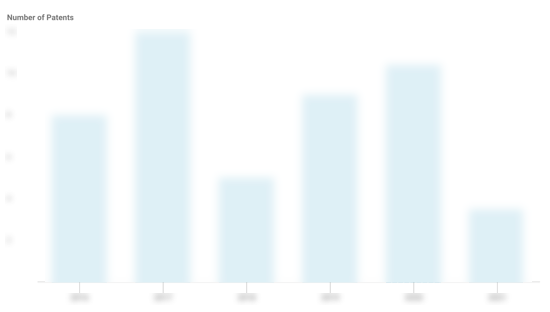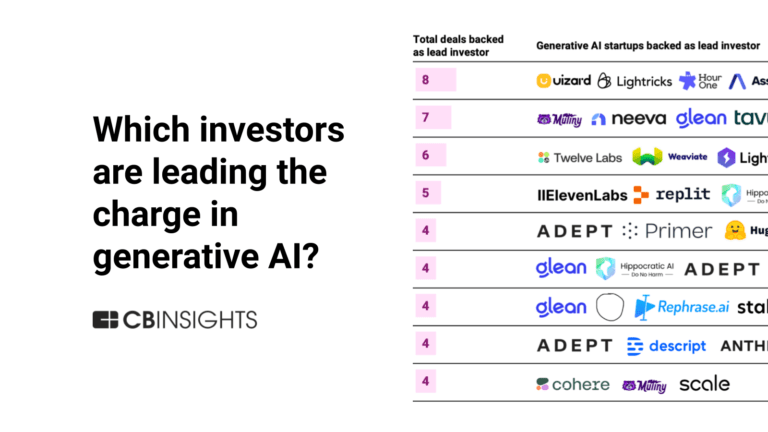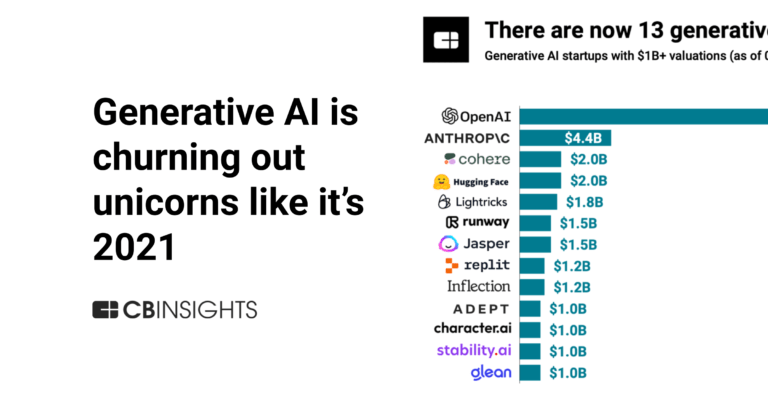
Lightricks
Founded Year
2013Stage
Angel | AliveTotal Raised
$335MRevenue
$0000About Lightricks
Lightricks is an AI-first company focused on visual content creation in the creative and business sectors. The company offers applications and platforms that utilize AI photo and video generation models to provide editing tools and marketing solutions. Lightricks serves the content creation and influencer marketing industries. It was founded in 2013 and is based in Jerusalem, Israel.
Loading...
Lightricks's Product Videos


ESPs containing Lightricks
The ESP matrix leverages data and analyst insight to identify and rank leading companies in a given technology landscape.
The generative AI — photo & video tools market utilizes machine learning algorithms to revolutionize the generating and editing processes. Vendors in this market offer tools that can automatically create images and videos, recover missing details, remove compression, increase image resolution, correct colors and tones, and process photos up to 10 times faster than traditional editing companies. Th…
Lightricks named as Leader among 10 other companies, including Runway, PhotoRoom, and Pika.
Lightricks's Products & Differentiators
Facetune
An image and portrait editing toolkit for content creators of all kinds. Facetune helps user edit their photos flawlessly to express themselves and share their content with confidence.
Loading...
Research containing Lightricks
Get data-driven expert analysis from the CB Insights Intelligence Unit.
CB Insights Intelligence Analysts have mentioned Lightricks in 4 CB Insights research briefs, most recently on Oct 17, 2024.

Oct 17, 2024
The generative AI for e-commerce market mapExpert Collections containing Lightricks
Expert Collections are analyst-curated lists that highlight the companies you need to know in the most important technology spaces.
Lightricks is included in 6 Expert Collections, including AR/VR.
AR/VR
1,508 items
This collection includes companies creating hardware and/or software for augmented reality, virtual reality, and mixed reality applications.
Unicorns- Billion Dollar Startups
1,257 items
Artificial Intelligence
9,386 items
Companies developing artificial intelligence solutions, including cross-industry applications, industry-specific products, and AI infrastructure solutions.
Digital Content & Synthetic Media
2,287 items
The Synthetic Media collection includes companies that use artificial intelligence to generate, edit, or enable digital content under all forms, including images, videos, audio, and text, among others.
Influencer & Content Creator Tech
339 items
Companies that serve independent creators who want to monetize their own work, from content creation tools to administrative back-end platforms to financing solutions.
Generative AI
1,298 items
Companies working on generative AI applications and infrastructure.
Lightricks Patents
Lightricks has filed 1 patent.
The 3 most popular patent topics include:
- audio engineering
- broadcast engineering
- continuous distributions

Application Date | Grant Date | Title | Related Topics | Status |
|---|---|---|---|---|
6/29/2020 | 8/31/2021 | Continuous distributions, Video signal, Broadcast engineering, Audio engineering, Video formats | Grant |
Application Date | 6/29/2020 |
|---|---|
Grant Date | 8/31/2021 |
Title | |
Related Topics | Continuous distributions, Video signal, Broadcast engineering, Audio engineering, Video formats |
Status | Grant |
Latest Lightricks News
Jan 14, 2025
As agencies evolve AI tools for influencer vetting, they’re also discovering the tech’s limitations Ivy Liu Influencer agencies have embraced generative AI applications over the last year, as they seek to cut the time taken to arrange creator involvement in brand campaigns. The client reaction to those solutions has been mixed . But in recent months, agencies operating in this space have found one area with clear application for AI tools — brand safety. Creator vetting can consume up to “a few days to a couple of weeks, depending on the depth of analysis,” said James Clarke, senior director, digital and social at PepsiCo Foods U.S. AI solutions aim to cut that time down to a matter of minutes. Setups differ between agencies, but most pushing ahead have combined AI-assisted search tools with generative AI applications that analyze the content of social posts. The systems are used to find creators that are a good fit for a brand and disqualify ones whose output crosses a client’s guidelines. Marketers have grown more sensitive and cautious when it comes to choosing influencer partnerships in recent years. According to agency executives, guardrails might range from depictions of alcohol consumption, swearing or political speech. According to Aynsley Moffitt, director of product and growth at Open Influence, the “majority” of clients limit vetting to the last six months of a creators’ social activity, though some requested the company’s help to preview up to five years’ worth of content. “This comprehensive approach helps protect brand reputation while identifying creators who will be authentic advocates for our clients,” Moffitt said. “It’s a first line of defence,” added Ben Jeffries, CEO and co-founder of creator agency Influencer. The time saved might enable an agency to take on more briefs, or manage a higher number of creator relationships — allowing them to service larger campaigns. “It’s an efficiency and scale play,” Mae Karwowski, the founder of WPP creator agency Obviously, told Digiday. “The more time we can save on the ‘first pass’ of content or review of creators’ profiles, the more time we can spend on strategy and optimization.” Demand among advertisers for a time-saving AI solution to creator vetting — and the number of companies offering such a solution — is on the rise. Viral Nation has offered such a solution since 2023 , but agencies aren’t the only ones responding. Lightricks, a software company that publishes software such as Facetune, is currently developing an AI-based creator vetting tool called SafeCollab. The company embarked on an open beta stage of development in November after working with six brand advertisers, including PepsiCo, through 2024. The software uses both public social posts and access granted by creators that use Lightricks’ Popular Pays influencer commerce platform to scan and analyze an influencer’s activity, said Corbett Drumney, vp of brand partnerships at Lightricks. Instagram and TikTok; X and YouTube were next to be tested. “It basically does a cursory Google internet search for them, summarizes it, and then it will summarize the [social] content that it indexed,” he explained. According to PepsiCo’s Clarke, the beta test using SafeCollab was one of several ongoing trials using AI for creator marketing. “By leveraging emerging technologies… we are confident that our teams will be able to move faster, operate more efficiently, and increase the effectiveness of creator vetting,” he said in an email. Clarke declined to share the “red lines” PepsiCo used to disqualify creators. Each background report generated using the software costs several hundred dollars, Drumney said, though he declined to provide precise financials. Lightricks’ product is intended as a self-service application for in-house teams, but agencies such as Influencer, Obviously and Open Influence each offer similar solutions for creator selection. Creator marketing agency Props offers a solution built with API access to Google’s Gemini model, while Influencer has used a proprietary software built upon API access to ChatGPT to service its entire client roster since October. Prior to that point, Influencer’s staffers would have to OK a creator by manually trawling back through their feeds. Influencer’s Jeffries said the AI solution had helped speed up the work of clearing influencers for partnerships, monitoring campaign outputs, and informed the agency’s post-campaign aftermath reports. Automating creator vetting carries larger implications than just time savings, though. Large language models’ habit of hallucinating responses, or of reproducing the biases of their original inputs, provide shaky foundations for decision-making. Creator marketing agency Props’ solution, called Ollie, occasionally misinterprets the images it’s asked to analyze, said Megan Matera, director of client success. In one example she gave, a creator had posted an image showing them drinking beer at a spa. “Ollie had flagged that as ‘they were bathing in beer’.” Matera said. In the case of SafeCollab, Corbett said his team was in the process of adding custom filters to its software, because its default settings flagged too many posts as risky. He said that clients had told the company that the result was ”too alarmist,” adding that “we’re going to have to change the way we present this stuff.” To guard against such issues, none of the applications built by Lightricks or its agency peers are able to make decisions over which creators get the green or red light. Instead, the systems flag problematic posts a human staffer to make a call over. “We always have our human team review all work done via AI,” said Obviously’s Karwowski. “Having experienced team members review any generated insights means we can provide real-time feedback when something seems off,” added Open Influence’s Moffitt. Still, there’s an uncomfortable parallel between the rise of AI-assisted influencer selection — and brand marketers’ over-use of programmatic brand safety filters, which have been credited with effectively defunding news organizations . With influencer marketing becoming more and more “programmatic” — both in idea and execution — automating the task of creator vetting might risk repeating that harm, defunding creators whose activity is deemed to fall outside the realm of the acceptable without their knowing. Jeffries suggested that human intervention in AI-powered selection systems would always be necessary. “Influence marketing is not just a media buy, it’s also a creative buy,” he concluded.
Lightricks Frequently Asked Questions (FAQ)
When was Lightricks founded?
Lightricks was founded in 2013.
Where is Lightricks's headquarters?
Lightricks's headquarters is located at Professor Racah Street, Jerusalem.
What is Lightricks's latest funding round?
Lightricks's latest funding round is Angel.
How much did Lightricks raise?
Lightricks raised a total of $335M.
Who are the investors of Lightricks?
Investors of Lightricks include Heidi D'Amelio, Dixie D'Amelio, Charli D'Amelio, Marc D'Amelio, Insight Partners and 15 more.
Who are Lightricks's competitors?
Competitors of Lightricks include Bending Spoons, Canva, EmbodyMe, LiveLink, PhotoRoom and 7 more.
What products does Lightricks offer?
Lightricks's products include Facetune and 3 more.
Loading...
Compare Lightricks to Competitors

FaceApp is a company that focuses on digital technology, specifically in the photo editing industry. The company offers a photo editing application that uses artificial intelligence to provide a variety of filters, effects, and tools that can transform portrait photos into magazine cover quality images. The application primarily caters to individual users who are interested in photo editing and enhancement. It was founded in 2017 and is based in Limassol, Cyprus.

Reface specializes in AI-powered content creation tools within the technology sector. Its main offerings include an AI face swap app, image and video style transformation, and photo animation services, all designed to simplify and enhance the user experience in content creation. The company primarily serves the entertainment and content creation industries. It was founded in 2019 and is based in Wilmington, Delaware.

Topaz Labs develops software for photo and video editing. The company offers tools for denoising, sharpening, and upscaling images, as well as stabilizing and processing video content. Topaz Labs' products are used by photographers and videographers, including professionals in the tech, entertainment, and aerospace sectors. It was founded in 2006 and is based in Addison, Texas.
Alpaca is a company that focuses on the intersection of artificial intelligence and art, operating within the technology and creative industries. The company offers a suite of AI tools designed to assist artists in their creative process, enabling them to generate images, refine concepts, and experiment with style and composition. Alpaca primarily serves the creative industry, particularly artists and designers. It is based in California, United States.

EmbodyMe specializes in visual content creation and communication sectors. The company offers tools for neural rendering, real-time 3D face tracking, and AI video generation, enabling users to produce and manipulate visual content across various platforms. EmbodyMe primarily serves industries that require advanced visual content generation, such as video conferencing, live streaming, and digital entertainment. EmbodyMe was formerly known as Paneo. It was founded in 2016 and is based in Tokyo, Japan.
Avatarify is a company that provides a mobile application for animating photos into singing portraits. Users can select a song and apply it to a photo for sharing. The app includes deepfake technology for real-time face-swapping during video calls. It was founded in 2020 and is based in Moscow, Russian Federation.
Loading...


